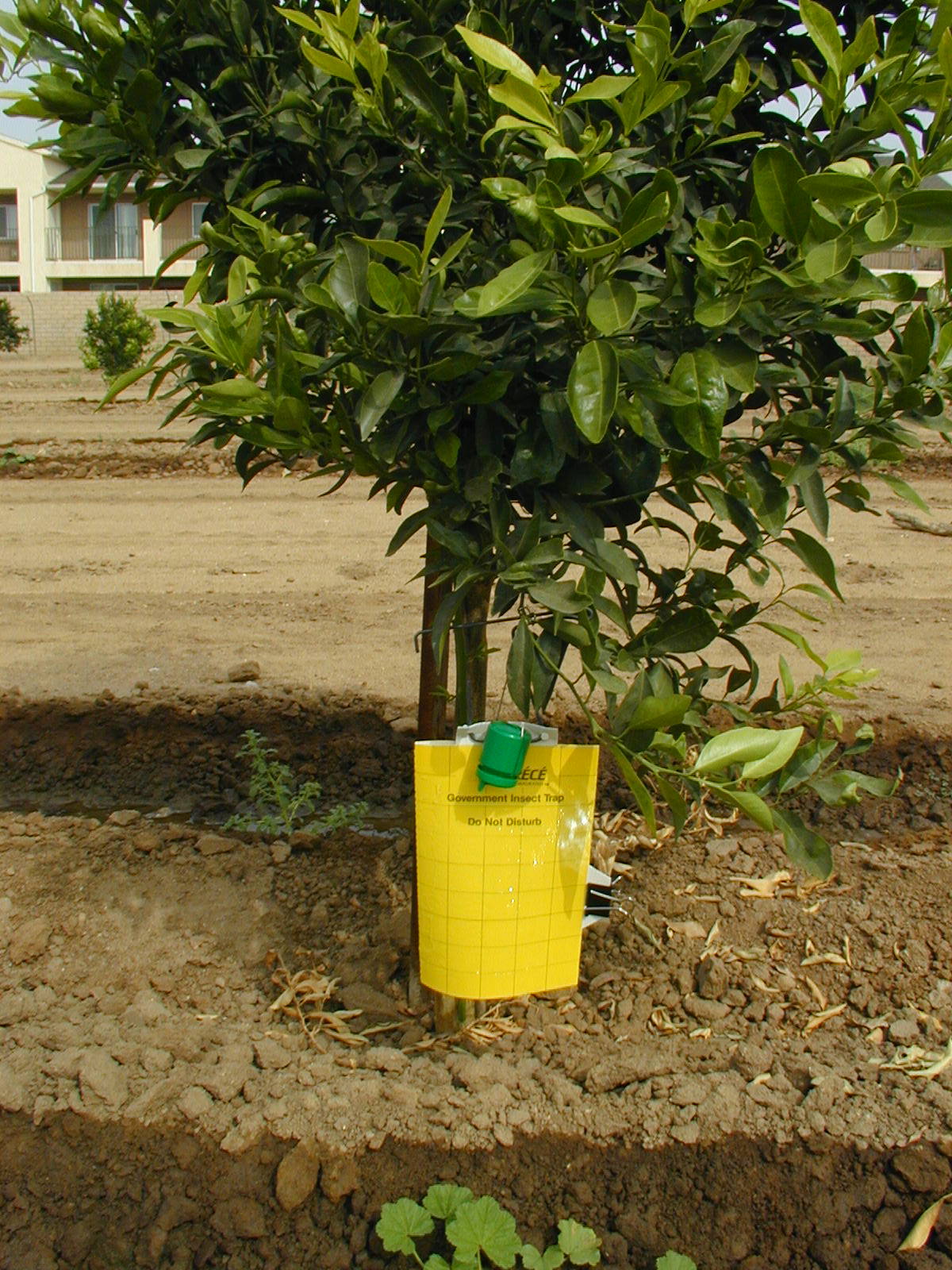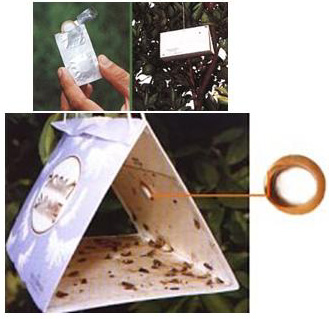

|
| Home | Research | Links | Publications | Recent News | |
|
Insect Chemical Communication Chemical communication involves the production and release of specific chemicals called semiochemicals by the emitter, and the detection and olfactory processing of these signals (see introduction) leading to appropriate behavioral responses in the receiver. In most insect species, chemical attraction is the major means of sexual recruitment (MOVIE requires RealPlayer or MS Media Player), with females in most (but not all) cases being the emitter and males being the receivers. In this case, these female-produced semiochemicals are referred to as sex pheromones. Semiochemicals (pheromones, kairomones, allomones, etc.) are invaluable tools in integrated pest management (IPM) programs. They may be used to either monitor populations (MOVIE requires RealPlayer or MS Media Player), thus assisting in treatment timing, or to reduce populations by mass trapping, lure-and-kill or mating disruption. Pheromone traps are widely used for monitoring insect populations. A number of lepidopteran species have been successfully controlled using sex pheromones in mating disruption strategies, whereas mass trapping and lure-and-kill are more popular with other groups of insects. The cornerstone of any semiochemical-based approach is a well-defined pheromone system. In moths, this system is largely formed by multiple constituents in a precise ratio. Chemical Ecology Tools Bioassay-based chemical ecology approaches generally lead to the full characterization of pheromone systems. There are a number of techniques that can be applied for the identification of pheromones and other semiochemicals. Initially, the pheromone has to be extracted. When a pheromone gland is known,
Our Research Programs The Honorary Maeda-Duffey has both fundamental and applied research activities. The former is aimed at getting a better understanding of the molecular basis of insect olfaction. Using Bombyx mori as a model,
Odor-oriented navigation in insects, be it a male moth flying towards a pheromone source (a female advertising her readiness to mate) or a female mosquito seeking a blood meal from a human host, requires both the fast delivery of semiochemicals to their olfactory receptors and their inactivation on a millisecond timescale (soon after the signal is delivered). Unlike the mechanism of pheromone binding and release (see introduction), the molecular basis of signal inactivation in insects is under considerable debate. The cloning and characterization of the first putative insect odorant-degrading enzyme (Ishida and Leal, 2002) is part of the effort by the PI’s team to test the hypothesis that chemical signals are inactivated by an enzymatic process. Contribution to the Agricultural Experiment Station The fundamental research activities in the Honorary Maeda-Duffey lab may lead us to the long-term goal of understanding how animals perceive and orient in the environment. A full understanding of the molecular basis of signal processing and inactivation may pave the way for the development of novel strategies for controlling insect pest populations based on manipulation of the olfactory system. 
On the other hand, the mid- and short-term goals of our applied research activities are the discovery of attractants (pheromones and other semiochemicals) and development of new formulations to be used in IPM programs. We focus both on species that are economically important to California agriculture and invasive species, with the potential to threaten California agriculture. For example, we have been screening possible attractants from plants preferred by females of the glassy winged sharpshooter (Homalodisca coagulata) (GWSS) for oviposition. These plant-derived volatile compounds are identified by gas chromatography with a mass spectrometer detector, synthesized, and tested in the field in collaboration with Dr. Frank Zalom. This project may lead to improved trap systems for monitoring population levels of the GWSS. 
The PI has identified pheromones and other semiochemicals from a number of species, including scarab beetles, true bugs, cerambicids, moths, etc. Many formulations are now commercially available for monitoring populations (MOVIE requires RealPlayer or MS Media Player)of these economically important species. Recently, the PI and his collaborators in Brazil and in Japan have identified the sex pheromone of the citrus fruit borer, Ecdytolopha aurantiana (Leal et al., 2002; Bento et al., 2002), which causes orange growers in Brazil an estimated 50 million dollars in crop losses annually. The availability of a pheromone system for monitoring population levels of the citrus fruit borer has allowed a dramatic reduction in the number of sprays, with consequent decrease in losses (both economic and environmental). Although these results may not have immediate application to California agriculture, these pre-emptive actions are highly desired since the availability of early detection is essential for eradication programs in the event of the citrus fruit borer becoming an invasive species. Another AES-related project is aimed at the development of a protein-based high throughput system for the screening of mosquito repellents. User-friendly, better repellents would reduce the chances of human virus infection by deterring mosquito feeding. These new products would benefit farmers and the public in general. References
|
| Home | Research | Links | Publications | Recent News | |
Site maintained by Walter S. Leal wsleal@ucdavis.edu.
Design was was
adapted from http://entomology.ucdavis.edu/ (by namnguyen@ucdavis.edu)
Last Updated:
12/18/02